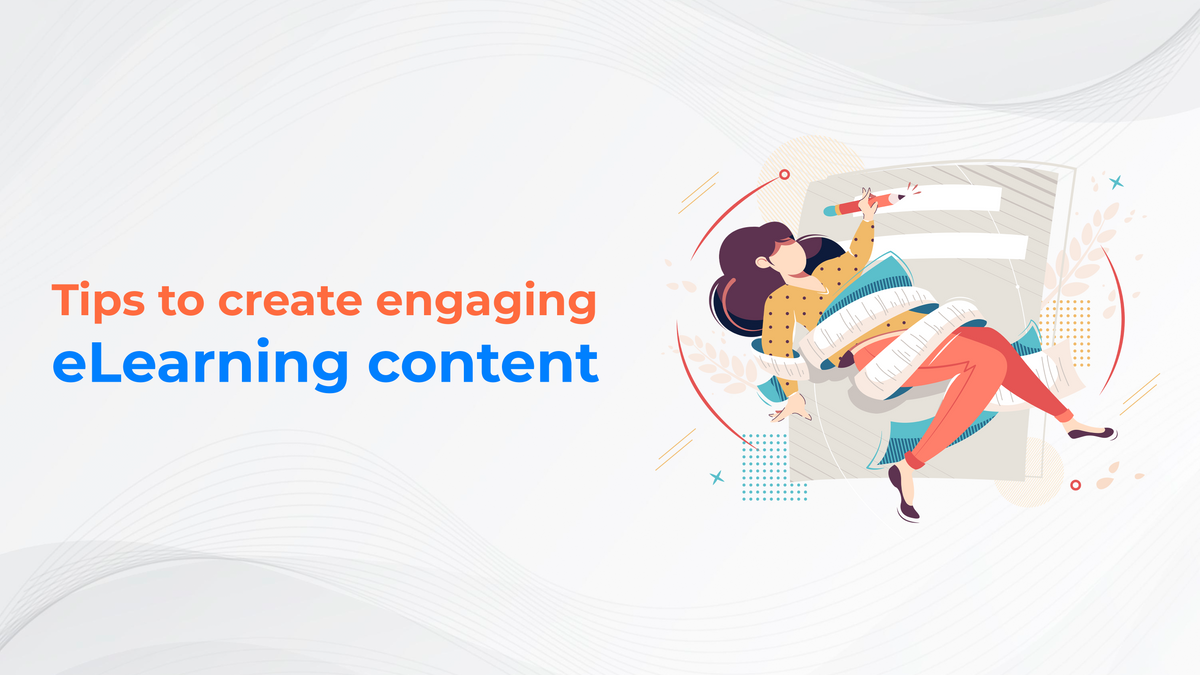As more and more educational institutions turn to eLearning as a way of delivering content, it is important to have an understanding of the best practices for creating effective eLearning. With the rapid advancement of technology and the increasing demand for online learning, eLearning has become an essential part of education and professional development. Creating effective eLearning content is crucial to engage learners, facilitating knowledge retention, and achieve learning objectives. In this blog post, we will explore some best practices for creating engaging and impactful eLearning content.
Designing the Right LMS
Designing the right Learning Management System (LMS) for your eLearning needs is essential for creating effective and engaging content. Whether you're an educator, trainer, or learner, understanding the best practices for selecting and using an LMS can help ensure that your course materials are as effective as possible. Here are a few tips to keep in mind when designing the right LMS for your needs:
- Understand Your Audience
One of the most important aspects of creating effective eLearning content is understanding your audience. Take the time to identify the needs, preferences, and learning styles of your target learners. Consider their prior knowledge, skill levels, and any potential challenges they may face. This information will help you tailor your content to meet their specific needs and enhance their learning experience.
2. Use Interactive Multimedia Elements
eLearning allows for the integration of various multimedia elements to enhance engagement and understanding. Incorporate videos, images, infographics, audio recordings, and interactive simulations to present information in a visually appealing and interactive manner. These elements break the monotony and stimulate multiple senses, making the learning experience more engaging and memorable.
3. Chunk Information into Digestible Modules
Breaking down the content into smaller, manageable modules is essential for effective eLearning. Presenting information in bite-sized chunks allows learners to absorb and process the content more easily. Each module should focus on a specific topic or concept, and the content should be organized in a logical and sequential manner. Consider using headings, subheadings, and bullet points to enhance readability and comprehension.
4. Incorporate Interactive Activities and Assessments
Active learner participation is crucial for effective eLearning. Include interactive activities such as quizzes, case studies, discussions, and simulations to promote learner engagement and reinforce learning. These activities provide opportunities for learners to apply knowledge, solve problems, and interact with the content. Additionally, integrate formative assessments throughout the eLearning module or course to evaluate learners' progress and provide feedback.
5. Regularly Update and Improve Content
eLearning content should not be static. Regularly update and improve your content based on learner feedback, emerging trends, and advancements in the field. Continuously assess the effectiveness of your content through user analytics, surveys, and assessments. This iterative process ensures that your eLearning materials remain relevant, up-to-date, and aligned with learners' needs.
The Power of Visuals to Enhance eLearning Experiences
The power of visuals cannot be overstated when it comes to creating effective eLearning content. They play a crucial role in helping educators and learners to better understand complex topics, retain information, and create positive emotions. In this section, we will outline best practices for incorporating visuals into eLearning experiences.
Visuals present complex information in a simplified way and enhance the learner's attention and comprehension by providing context for the content. They also help learners connect to stories and experiences better as they provide crucial context and relevance that text alone cannot provide. In addition to it, visuals create positive emotions like curiosity, amusement, and engagement which make learning more enjoyable. Using visuals helps make content more memorable which leads to higher chances of success in learning outcomes overall.

To incorporate these best practices into your own eLearning content, include relevant images or other multimedia elements that help support the story of your eLearning experience. Consider visual design principles like symmetry, balance, and contrast when creating a visually interesting layout that optimizes results with your user's experience with your System. Incorporating animation into your lesson plans is another excellent way to keep learners engaged and ensure that image formats are appropriate for mobile devices, so they don't take too long loading time on any platform or device size, be it from laptop or smartphone usage. Lastly, engage with visual elements such as interactive activities such as quizzes or games. This will help maintain user interest throughout their journey of completing their course material while having fun doing it!
With these tips in mind, incorporating visuals is an easy way to enhance any eLearning experience while giving educators and learners alike an enjoyable yet meaningful learning environment!
Measuring the Impact of eLearning on Educators and Learners
The impact of eLearning on educators and learners is undeniable. As the demand for digital learning increases, so too does the need for effective eLearning content. Here are some best practices to follow when creating engaging and useful eLearning content:
- Develop content that reflects the appropriate learning objectives, including multiple media elements such as videos, simulations, and gamification.
- Incorporate assessment tools to measure learning progress and adjust accordingly if needed.
- Establish clear objectives for your eLearning materials and analyze their impact on educators and learners, making use of interactive elements, visuals, and audio to enhance understanding.
- Measure the effectiveness of your eLearning content with data-driven metrics and feedback loops to maximize learner engagement and success.
To Wrap Up
Creating effective eLearning content requires careful consideration of best practices. From designing the right LMS for your needs to engaging learners with creative content and measuring the impact of eLearning on educators and learners, there are many steps that can be taken to ensure that your program provides the best possible experience for all involved. With these tips in mind, you'll be able to create engaging and effective eLearning content that will help drive success in any educational setting. Take action today and start creating an optimized online learning experience for everyone!










